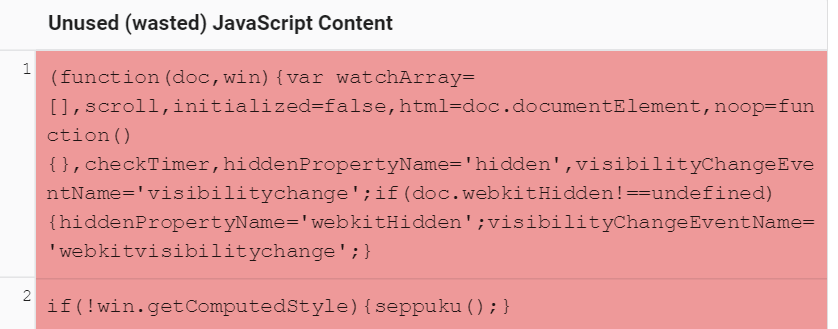
SEO Storytelling: Turning Jargon into Stories that Win Sprints
Published September 15, 2025
Here’s the thing about enterprise SEO: you think it’s all about the website pages. But it’s not. It’s about the people.
As Petra Kis-Herczegh put it in our Enterprise SEO Challenges (& Solutions) webinar with Robert Lora, enterprise is “where scale meets complexity… website scale, organisational complexity and brand authority.”
So when you’re wrangling millions of URLs and a maze of approvals, the winners aren’t the loudest or the most technically gifted SEOs; they’re the adept translators. Translators of SEO jargon into persuasive stories that generate support and motivate action.
And yet, the misconception persists: we think that the more resources a company has, the easier it should be, right? Wrong. In reality, the bigger the brand, teams, and budgets, the more complicated it all becomes.
Robert put it succinctly in our webinar: “more money, more problems…”
Amen to that.
In enterprise SEO, you don’t need another 40-page audit report. You need a tailored communication strategy that makes the C-suite, product, and engineering say: “Yep, that goes in the next sprint.”
This article is your field guide to doing exactly that, using Sitebulb’s visual outputs (and a bit of psychology) to convert nods into commitments.
Contents:
Swap “knowledge first” for “stakeholder first”
Enterprise SEO rarely stalls because you don’t know enough. It stalls because your audience doesn’t care enough yet. People problems, not technical problems.
So, before you craft your audit findings, read the room. What do they care about?
C-suite: revenue, risk, market share, brand trust
Product: UX, experiment velocity, roadmap risk, capacity
Engineering: website health, bugs, performance, blast radius
Now you just need to figure out: what kind of information does each group need to see to care? What are their metrics and how do yours impact them?
From nods to commitments
A room full of nodding heads feels great, until nothing gets done.
So Petra’s advice is to force the commitment moment. Ask, “Which sprint can you add this ticket to? Who owns it?” If you hear silence or “maybe next year,” actually that’s a good thing—you’re getting closer to the real objection. Is it capacity? Risk? Misaligned incentives? Whatever it is, if you can fix the blocker, you’ll get commitment.
Pro tip: end every meeting with a written summary including owner, sprint target, and the definition of done (tests pass, tags present, render verified, monitoring in place).
Speak their language
How do you get through to people? You’ve got to speak their language. Nobody cares about meta tags except you. Nobody wants to hear about NAP, except YOU.

“Use (their) language and explain how SEO supports that. If you start talking SEO jargon, it’s not going to work.”
Try these terminology reframes:
C-suite:
Crawl budget → Google’s attention span
Orphan pages → Revenue-driving pages disconnected from the website
CLS/LCP → Checkout friction and wasted ad spend
Product:
Pagination/hreflang issues → Discovery & relevance bugs
Engineering:
“Missing canonicals” → Failing QA rule: canonical must exist & self-reference unless variant
“Fix speed” → Block non-critical script; target LCP ≤ 2.5s; evidence in waterfall
Make it visual (and undeniable)
You know what they say: a picture speaks a thousand words. So use visuals to get your point across.
Crawl visualisations: As Robert said, “The crawl visualisation map on Sitebulb is awesome for showing… ‘these are orphan pages’…” Circle the disconnected clusters. Label them “unreachable PDPs” or “dead-end support content”. You won’t need ten bullet points.
Response vs rendered HTML: Show the difference for a key template (you can use Sitebulb’s Response vs Render Report for this). If the title/H1/links are missing post-render, you’ve got instant engineering attention.
Redundant code: Use Sitebulb’s Code Coverage Report, which highlights exactly which bits of code need removing from a template to improve performance. Just copy and paste into the ticket, done.

Competitor screenshots: Put your PDP next to a rival’s with prominent trust signals. “This is what customers see” lands better than “we lack element X.”
Package the evidence in their tools: a one-page exec slide, a Jira ticket with screenshots, or a Looker/Tableau view. Petra’s rule is not to force stakeholders into your SEO tool; bring your data to their environment.
Audit by template, align to sprints
Tempting as it is, you don’t need to crawl the entire site every time. Petra’s guidance (and it’s also what we see our enterprise customers doing) is to prioritise by page type.
Identify high-impact templates (conversion-critical or frequently changing) and monitor them more often. (This is ridiculously easy in Sitebulb: How to use HTML page templates to analyse Sitebulb data and gain broader insight.)
And always coordinate with IT:

“Please always check with your IT team… how many URLs you can crawl per second. You do not want to upset them.”
Remember Robert’s reminder: in enterprise, “when you find an issue, it’s very likely affecting thousands of pages.” Fix the template once; multiply the impact.
International: tell the story that lands
Louder for those at the back!
A mirrored subfolder per country is the easiest way to create duplicate content, hreflang rot, and crawl waste. Worse still are IP-based redirects that hijack users and crawlers.
User pain: “Travellers can’t access the UK store when abroad; local hours are wrong so brand trust drops.”
Crawler pain: Logs show Googlebot US forced to /us/, starving /uk/ of crawl.
Fix: Serve country selector as a non-blocking banner; set reliable hreflang only for pages that actually exist; monitor with template-level checks.
Again, use log-file snippets and a crawl visual to prove the case in one glance.
Sprint to the finish
In most engineering teams, work is time-boxed into short cycles called sprints (often two weeks). Each sprint has a fixed set of tasks the team commits to deliver, with a few lightweight rituals to keep things moving: planning (what fits into the next two weeks), daily stand-ups (what I did / what I’m doing / what’s blocking me), reviews/demos (what got done), and retros (what to improve next time).
For SEOs, the trick is to package your asks so that they fit this cadence: small, testable tickets that can be completed inside a sprint and have a clear definition of done. Write SEO tickets like a good product person:
User story: “As a shopper, I need the UK PDP to load key content within 2.5s so I don’t bounce.”
Acceptance criteria: measurable, testable (e.g. LCP ≤ 2.5s on template X; canonical present; hreflang target returns 200).
Blast radius & rollback: how risky is this? how to revert?
Evidence: attach screenshots and before/after metrics.
Make it easy to say yes. Hot tip: Gus Pelogia wrote a great article for us about writing the perfect dev ticket.
De-risk big changes with developer empathy
Some fixes might seem like a small ask to us, but large template changes are scary for engineers—and for good reason. As Petra explained, “you are proposing things that are huge risks for the developers.”
Show them that you get it:
Propose smaller, layered changes first (e.g. move script to footer before full refactor).
Target one template before global rollout.
Offer to team up on QA using your checks (rendered HTML, log review, speed).
Suggest sneak-ins: attach your SEO tickets to work already in their sprint.
Then you’re not just reporting problems, you’re meeting them half way.
Be human first
Bribery with donuts may help to get your tickets prioritised (according to Tony Wright). But the broader point is Robert’s: build relationships before you need help. And not just in order to hit them up with a massive ask a week later, but to be a good human and a pleasant coworker.
Last time I checked, enormous companies are still run by people, not robots. Remember that, and you may find that doors open faster when your ticket really matters.
TL;DR
Translate your findings into stakeholder language, backed by pictures not paragraphs.
Force commitment moments: owner, sprint, definition of done.
Audit by template, not page; align checks to sprints and IT limits.
International ≠ translation; reconsider IP redirects; QA hreflang with logs and crawls.
Lower risk for devs; attach SEO work to existing projects; be useful.
What next?
Want to sharpen these skills? Enrol in our free Enterprise SEO training with Petra and Robert (check your inbox if you attended the webinar).
Find out more about Sitebulb Cloud, our enterprise-level crawler (without the enterprise-level price tag).

Jojo is Marketing Manager at Sitebulb. She has 15 years' experience in content and SEO, with 10 of those agency-side. Jojo works closely with the SEO community, collaborating on webinars, articles, and training content that helps to upskill SEOs.
When Jojo isn’t wrestling with content, you can find her trudging through fields with her King Charles Cavalier.
Articles for every stage in your SEO journey. Jump on board.
Related Articles
 Enterprise Local SEO for Luxury Kitchens & Bathrooms in London
Enterprise Local SEO for Luxury Kitchens & Bathrooms in London
 Enterprise SEO Challenges: The Complexity Tax & How To Break Free
Enterprise SEO Challenges: The Complexity Tax & How To Break Free
 Webinar: Enterprise SEO Challenges & Solutions
Webinar: Enterprise SEO Challenges & Solutions
 Sitebulb Desktop
Sitebulb Desktop
Find, fix and communicate technical issues with easy visuals, in-depth insights, & prioritized recommendations across 300+ SEO issues.
- Ideal for SEO professionals, consultants & marketing agencies.
Try our fully featured 14 day trial. No credit card required.
Try Sitebulb for free Sitebulb Cloud
Sitebulb Cloud
Get all the capability of Sitebulb Desktop, accessible via your web browser. Crawl at scale without project, crawl credit, or machine limits.
- Perfect for collaboration, remote teams & extreme scale.
If you’re using another cloud crawler, you will definitely save money with Sitebulb.
Explore Sitebulb Cloud Jojo Furnival
Jojo Furnival


